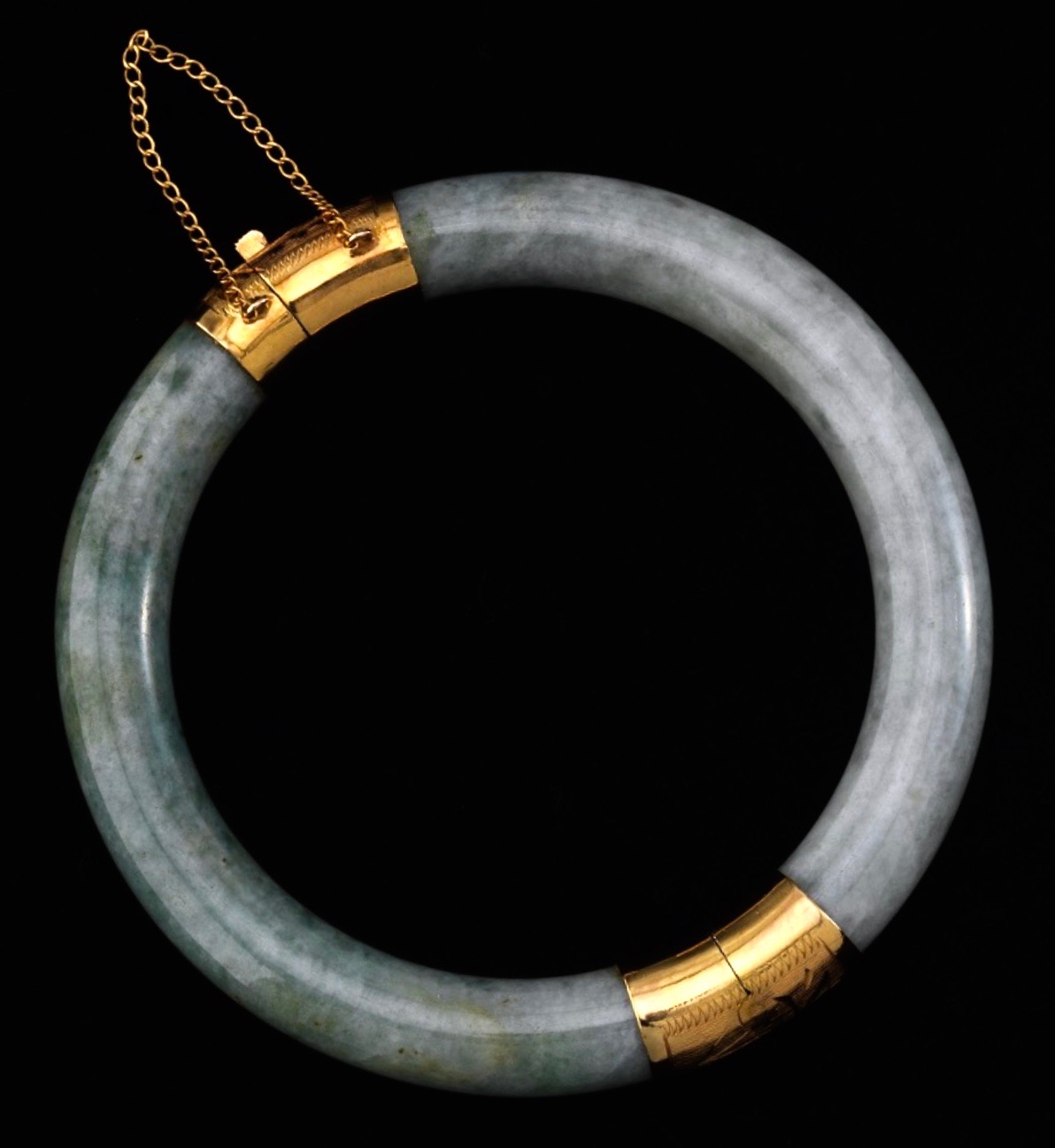

Title: Gold & White Celadon Jade Tubular Bangle Bracelet
Shipping: $29.00
Artist: N/A
Period: 20th Century
History: Art
Origin: Central Asia > China
Condition: N/A
Item Date: N/A
Item ID: 130
Ladies' Gold and White Celadon Jade Tubular Bangle 2 ⅛" within bangle x ⅜" 14k yellow gold hinged bangle with slide-in clasp and safety chain, tubular carved and well-polished white celadon jade; marked on the clasp; overall weight 49.9 gm. Condition: Very good. Beloved for its deep, diverse variations of color, alluring luster, and remarkable durability, the jade stone has captivated hearts and minds for centuries. Its earliest uses date back to the Stone Age when civilizations painstakingly crafted sharp axe heads and traded carved jade objects as currency. Master craftsmen across centuries and cultures have fashioned a swath of objects from the in-demand stone, including jade jewelry, plaques, sculptures, and even vessels. Today, these valuable artifacts can be found in museums and illustrious collections the world over. As with any luxury item, the main determinant of value to you will be how much you love the piece. When buying jade, however, consider not only the color and size of stones, but also the artistry in carving that may elevate a piece beyond the value of its color. Modern jade jewelry and objets d’art are diverse in their appeal and their intricacy. Historical pieces of jade will have tremendous value determined by the provenance that is available, as well as the quality of the color and the carving.
Jade jewelry today is a mix of antique jade jewelry and clean, modern designs. Traditional jade bangles are still a staple, but new color mixes in beads and cabochons are becoming increasingly more popular. Chinese jade jewelry in particular is poised for rapid growth in the luxury goods sector, and interest in China’s rich cultural heritage will be a key factor in the investment potential of jade jewelry and decorative art in the coming years. “China has both nephrite and jadeite, but values jadeite more highly,” explains Richardson. “Jade is considered an imperial gem and has been found in tombs of Shang kings.”
Link: https://en.wikipedia.org/wiki/Jade
Jade refers to an ornamental mineral, mostly known for its green varieties. It can refer to either of two different minerals: nephrite, a silicate of calcium and magnesium, or jadeite, a silicate of sodium and aluminium. Jade is featured prominently in ancient Asian art, but also has an important place in many other cultures.
During Neolithic times, the key known sources of nephrite jade in China for utilitarian and ceremonial jade items were the now–depleted deposits in the Ningshao area in the Yangtze River Delta (Liangzhu culture 3400–2250 BC) and in an area of the Liaoning province and Inner Mongolia (Hongshan culture 4700–2200 BC).[3] Dushan Jade was being mined as early as 6000 BC. In the Yin Ruins of the Shang Dynasty (1600 to 1050 BC) in Anyang, Dushan Jade ornaments were unearthed in the tomb of the Shang kings.